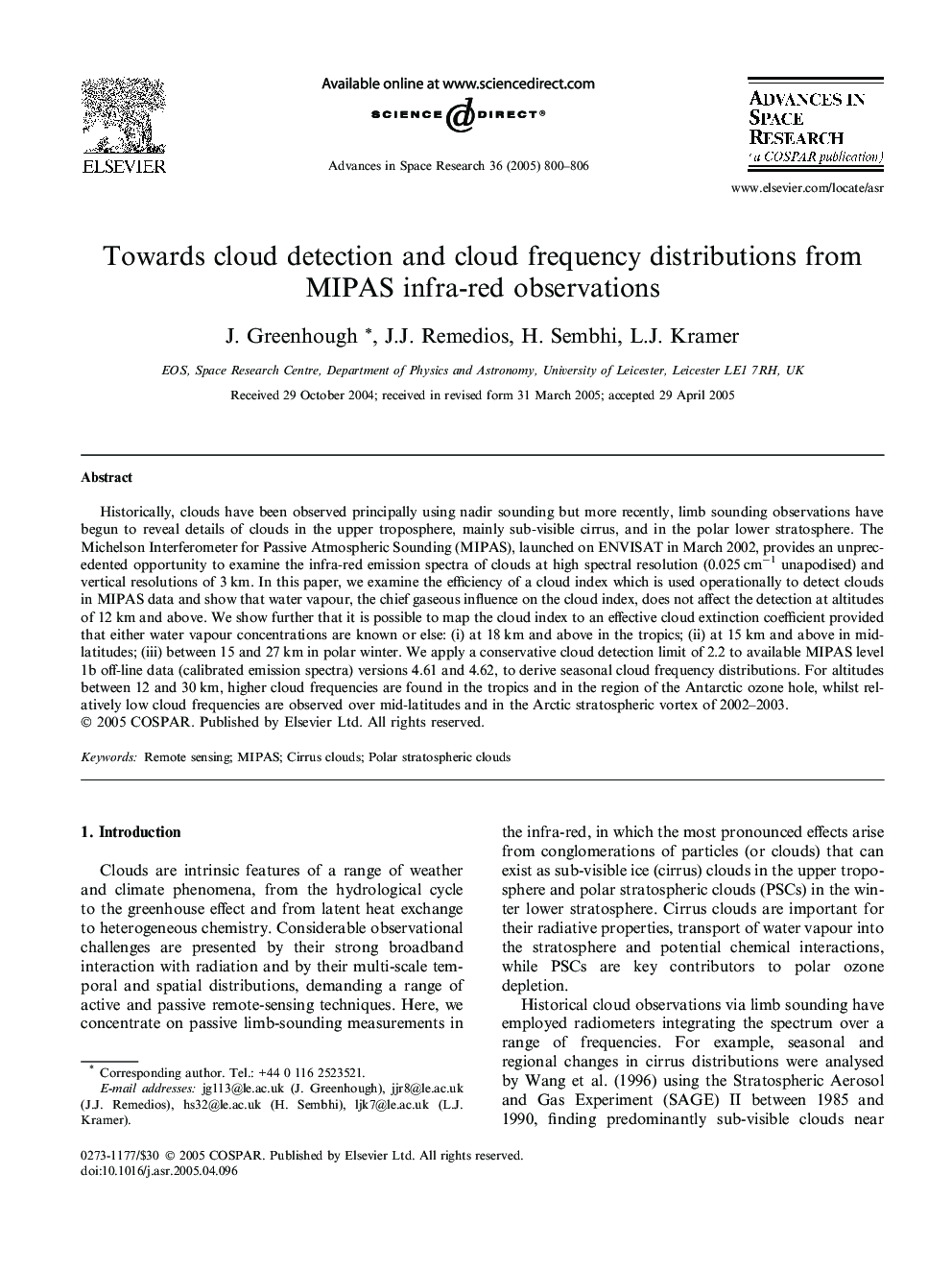| Article ID | Journal | Published Year | Pages | File Type |
|---|---|---|---|---|
| 10694784 | Advances in Space Research | 2005 | 7 Pages |
Abstract
Historically, clouds have been observed principally using nadir sounding but more recently, limb sounding observations have begun to reveal details of clouds in the upper troposphere, mainly sub-visible cirrus, and in the polar lower stratosphere. The Michelson Interferometer for Passive Atmospheric Sounding (MIPAS), launched on ENVISAT in March 2002, provides an unprecedented opportunity to examine the infra-red emission spectra of clouds at high spectral resolution (0.025Â cmâ1 unapodised) and vertical resolutions of 3Â km. In this paper, we examine the efficiency of a cloud index which is used operationally to detect clouds in MIPAS data and show that water vapour, the chief gaseous influence on the cloud index, does not affect the detection at altitudes of 12Â km and above. We show further that it is possible to map the cloud index to an effective cloud extinction coefficient provided that either water vapour concentrations are known or else: (i) at 18Â km and above in the tropics; (ii) at 15Â km and above in mid-latitudes; (iii) between 15 and 27Â km in polar winter. We apply a conservative cloud detection limit of 2.2 to available MIPAS level 1b off-line data (calibrated emission spectra) versions 4.61 and 4.62, to derive seasonal cloud frequency distributions. For altitudes between 12 and 30Â km, higher cloud frequencies are found in the tropics and in the region of the Antarctic ozone hole, whilst relatively low cloud frequencies are observed over mid-latitudes and in the Arctic stratospheric vortex of 2002-2003.
Related Topics
Physical Sciences and Engineering
Earth and Planetary Sciences
Space and Planetary Science
Authors
J. Greenhough, J.J. Remedios, H. Sembhi, L.J. Kramer,
